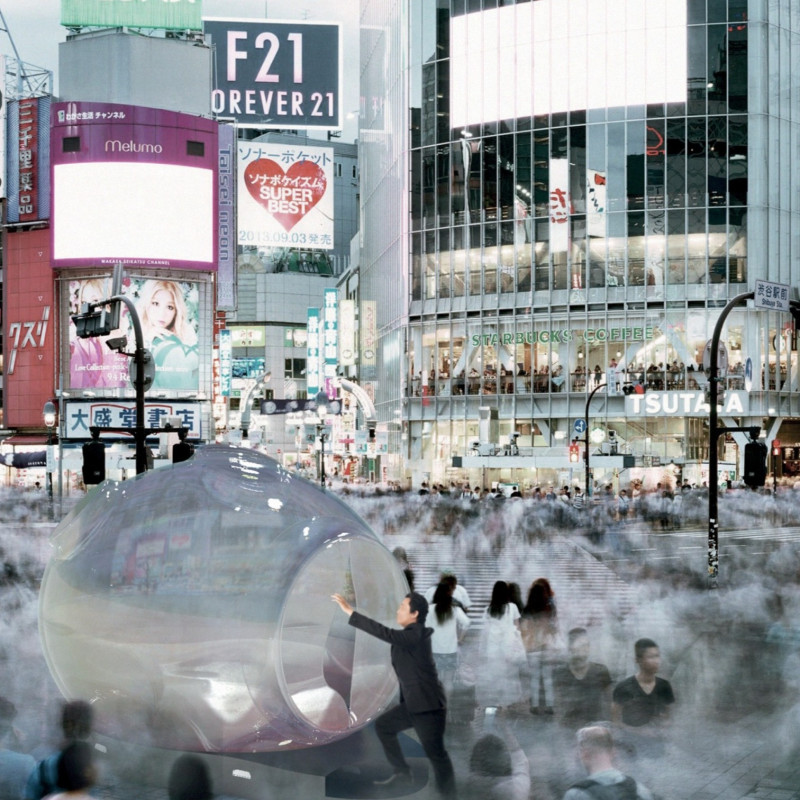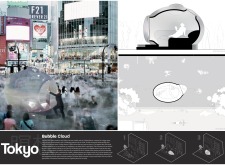5 key facts about this project
The essence of the “Bubble Cloud” lies in its conceptual framework, which seeks to foster individual contemplation and community engagement simultaneously. The design is characterized by a bulbous, transparent exterior reminiscent of a droplet, symbolizing both solitude and connection. Users find themselves drawn into the space, where they are surrounded by the dynamic energy of the city while enjoying a moment of respite—a unique feature that enhances their experience of the urban environment.
Functionally, the “Bubble Cloud” provides flexible spaces for various activities ranging from quiet contemplation to informal gatherings. The layout is designed with simplicity and versatility in mind, accommodating both individual reflection and communal interaction. Within its transparent walls, the structure invites natural light, creating an inviting atmosphere that shifts throughout the day. High-quality materials such as acrylic glass and recycled plastics are employed strategically, contributing to the project's sustainability while ensuring structural integrity and a pleasing aesthetic.
One of the most notable aspects of the “Bubble Cloud” is its unique materiality. The use of lightweight steel frames ensures that the design remains adaptable to different settings, while the integration of solar panels promotes energy efficiency. This thoughtful selection of materials reflects an understanding of the modern user's needs, balancing aesthetic appeal with environmental responsibility. The emphasis on sustainability extends beyond materials; the architectural design considers the interplay between the structure and its surroundings, embracing the vibrant life of Tokyo.
The entrance to the “Bubble Cloud” provides seamless access, encouraging spontaneous exploration of the space. Visitors are greeted with inviting openings that enhance flow and connectivity between the interior and exterior environments. Inside, comfortable seating arrangements promote leisure, allowing users to pause and engage in thoughtful conversation or reflection. The careful incorporation of lighting design complements this experience, creating a layered ambiance that adapts to various activities, from day to night.
What sets the “Bubble Cloud” apart from typical urban structures is its dedication to fostering social interaction while providing personal space. The project's design philosophy highlights the importance of community engagement, aiming to mitigate feelings of isolation that often accompany urban living. By creating an environment where individuals can retreat and connect, the project contributes positively to the quality of life in Tokyo.
In essence, the “Bubble Cloud” stands as a testament to innovative architectural design—one that not only addresses functional needs but also enhances the urban experience. Its thoughtful design choices and commitment to sustainability reflect important trends in contemporary architecture, making it a noteworthy case study for those interested in the intersection of environment, community, and individual well-being.
For those interested in exploring the architectural details of the “Bubble Cloud,” including the architectural plans, architectural sections, and architectural ideas that contribute to its design, further investigation of the project's presentation is highly encouraged. Understanding these elements can provide deeper insights into this compelling architectural project.























